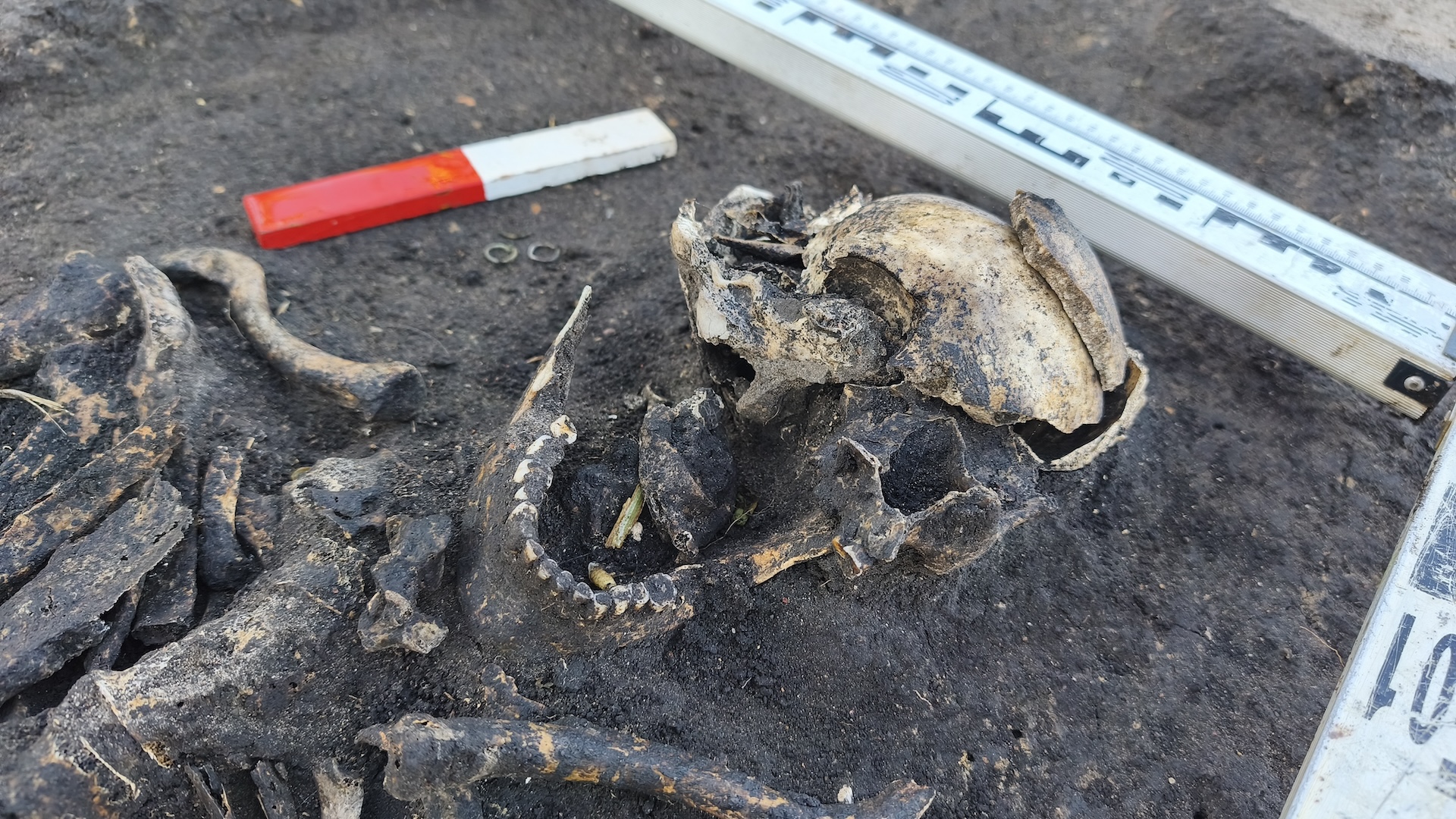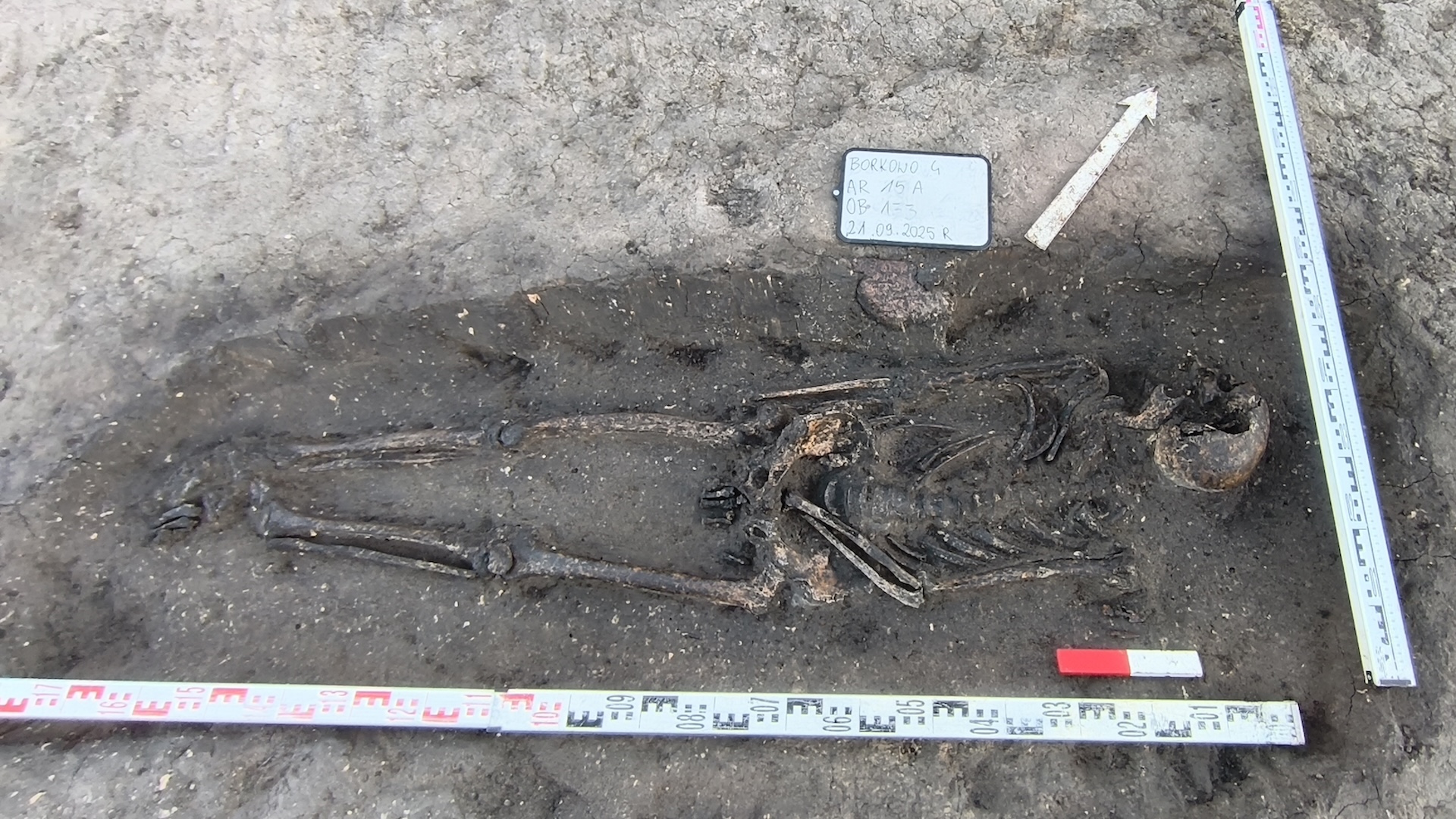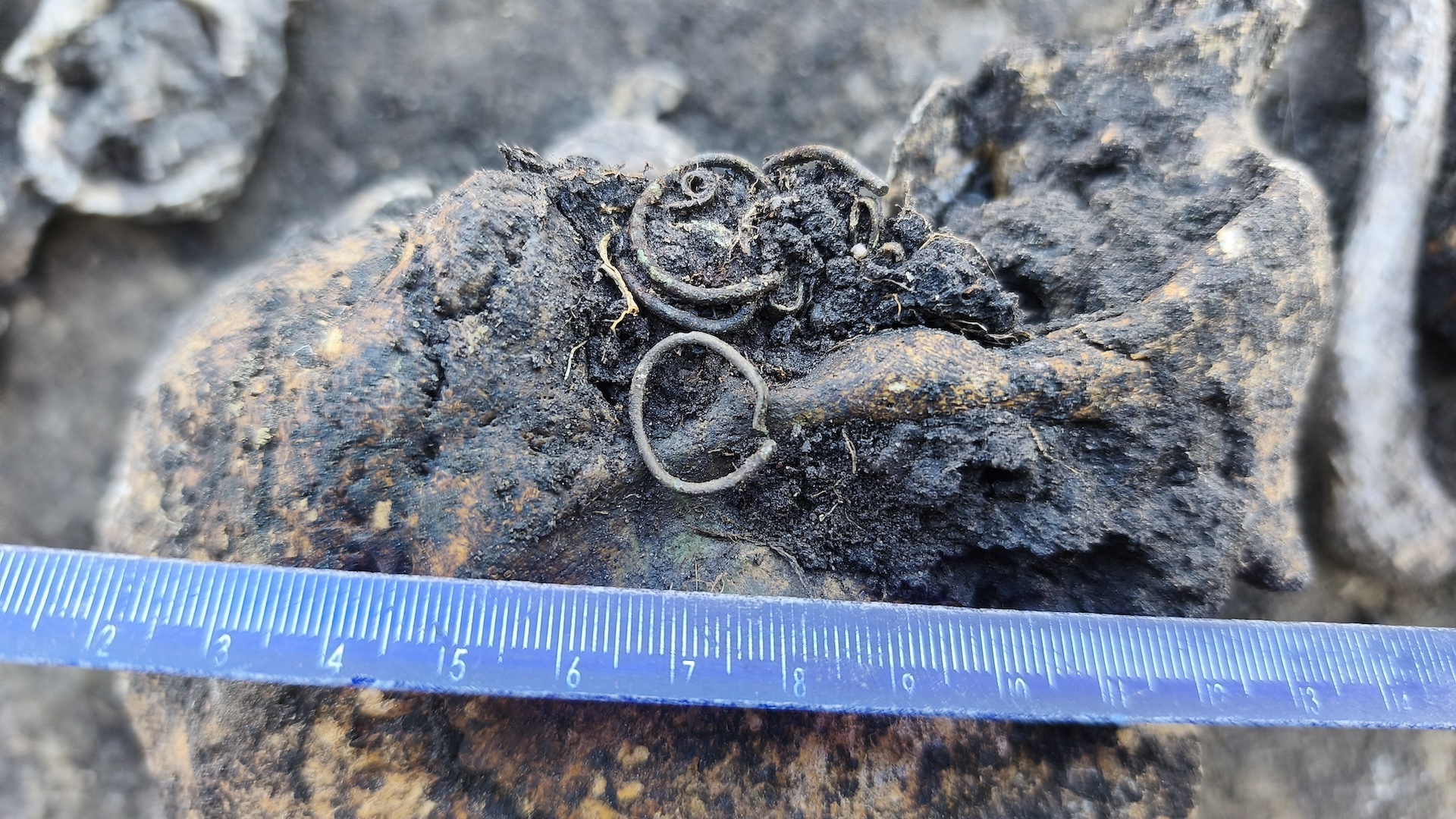1,000-year-old burials of 'first Christians' in Poland discovered near medieval settlement
Archaeologists have uncovered part of a cemetery, including 1,000-year-old human skeletons, near the remains of a fortified medieval settlement in the village of Borkowo in Poland.

Archaeologists have uncovered part of a cemetery, including 1,000-year-old human skeletons, near the remains of a fortified medieval settlement in the village of Borkowo in Poland.
The finds date to a time when many people were converting from paganism to Christianity in Poland. "We view these people as representatives of the 'first Christians' in these lands," Justyna Marchewka-Długońska, a researcher at Cardinal Stefan Wyszyński University in Warsaw and a member of the research team, told Live Science in an email.
The archaeologists noted that even though people were converting from paganism to Christianity, they still placed grave goods in their burials — a practice that was more commonly done among pagans. The team found the remains of arrowheads, a battle ax, knife blades, rings and carnelian (a reddish semiprecious stone) beads with the bodies.
Although some media outlets have claimed this discovery is a mass burial containing warriors who served Mieszko I — a duke of Poland who reigned from about 960 to 992, united the country and created an independent state — the researchers we spoke with said these claims are inaccurate. Instead, they said, the people were buried in single graves within a cemetery.
While all of the burials seem to date to around the time of Mieszko I, it's not clear what connection, if any, these people had to him. "Historically, we do not yet know whether we can discuss any connections at all," Marchewka-Długońska said.
"For now, the skeletons have been collected and are awaiting anthropological analysis," Marchewka-Długońska said.

One of the skeletons found in the cemetery in Poland.

The remains of grave goods, including rings and beads, found with the skeleton.
The analysis may tell researchers more about who these people were. At least one of the individuals may have experienced some trauma in their life, according to Marchewka-Długońska.
"Preliminary observations, made before cleaning, revealed traces of healed rib fractures" on the right side of one of the bodies, Marchewka-Długońska said.
The burials were found in excavations carried out prior to the construction of a gas pipeline in the area, and the research is ongoing.

Owen Jarus is a regular contributor to Live Science who writes about archaeology and humans' past. He has also written for The Independent (UK), The Canadian Press (CP) and The Associated Press (AP), among others. Owen has a bachelor of arts degree from the University of Toronto and a journalism degree from Ryerson University.
You must confirm your public display name before commenting
Please logout and then login again, you will then be prompted to enter your display name.
